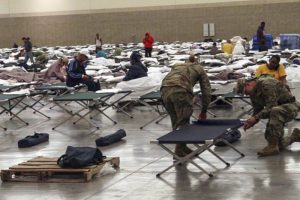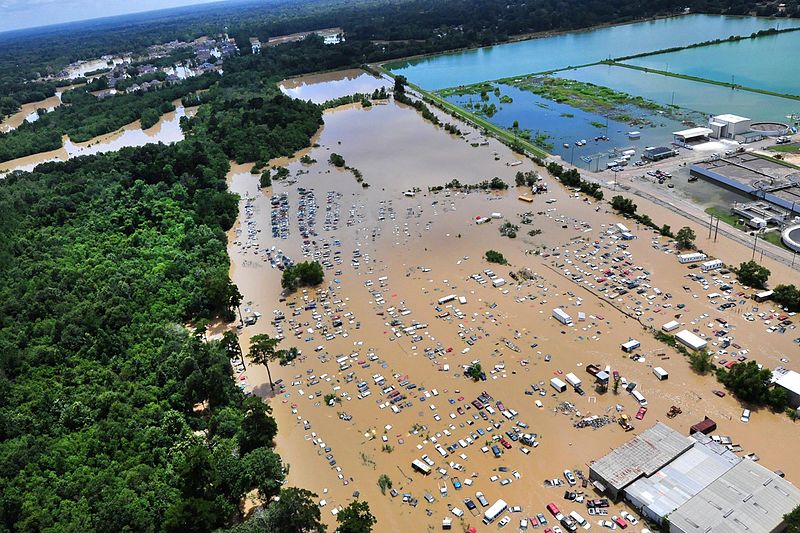Last week’s catastrophic flooding in Louisiana took 13 lives, damaged more than 60,000 homes and has been declared the worst natural disaster since Hurricane Sandy. In times of devastation, placing blame often seems to help make sense of tragedy. With unpredictable and unstoppable natural disasters, this is difficult.
However, with the media content rapidly building on this most recent disaster, many say that poor preparation worsened the impact of the flood.
It is speculated that planning and permitting enabled development in areas that had experienced recurring floods. Agencies had also failed to complete projects designed to mitigate flood damage before the storms hit. After a bit of research on this flood-prone area, it seems like a classic case of failure to learn from the past.

Florida Parishes: A Repeat Flood Target
Livingston Parish was one of the worst-hit areas, where 70% of homes suffered damage from the flood. This part of Louisiana, known as the Florida Parishes, is a repeat target for severe floods. For example, the flood of Livingston and East Baton Rouge parishes in 1983, where pounding rain continued for more than 50 hours while even heavier rain was falling north of them, and rising. About 5,500 homes and businesses were flooded, eventually resulting in $344 million in damages, making this flood on the Amite and Comite rivers to become the worst on record at the time. More major floods hit the region in 1990 and 1993, in 2001 Tropical Storm Allison dumped 19 inches of rain on Baton rouge and just last March, 9-15 inches of rain drenched the same area.
Lack of Action
Members of the Louisiana Floodplain Managers Association observed that the devastating 1983 flood was the fourth flood along the Amite River in an 11-year span and that the grave losses could have been mitigated had any flood-reduction efforts been implemented. They concluded that the issue was not a failure to plan, but a failure to follow through and act. Local officials began taking steps to improve flood protection systems such as raising highway bridges, upgrading levees and even approving a tax to fund a portion of the project by 2000. However, these efforts were not sustained.
Today, suburban sprawl has permeated into floodplains and all residents remain at risk.
For example, 75% of the community called “Central” in East Baton Rouge Parish is in the 100-year floodplain. According to news reports, up to 90% of homes in Central sustained damage from last week’s floods. Many of the properties damaged in the flood are in local agency-approved developments within the 500-year floodplain, however, with no safe construction requirements and no effort to deflect development to avoid putting more residents at risk. Currently, home buyers must obtain federal flood insurance to qualify for mortgages in the 100-year flood zones, but properties just outside these zones do not have the same requirement.
Learn from the Past and Improve Before It’s Too Late
The time to improve is not after a disaster has happened, when lives and homes have been lost. Improvement should be constant and swift follow through on plans should be without question. At Veoci, our software platform is built on the idea of getting the job done quickly, efficiently and in a way that will inevitably lead to a safer environment, with features such as the following:
- Instant activation of custom plans- finish what you start: Activating your drag-and-drop customizable plan will automatically assign mission-critical tasks and send notifications to the appropriate responders and team members. Track every step of the response from its activation to the moment that it is completed, ensuring that there is no task left unfinished and no promises unfulfilled.
- Digital mapping- delimit risky areas: In unpredictable times of natural disaster, emergency managers and town officials need to have a broad, clear overview of their territory with a precise depiction of exactly what is going on and where. Digitally geofence and highlight color-coded areas of high-risk, active flooding or other concerns. No area is a mystery and complete situational awareness is maintained at all times before, during and after a natural disaster.
- Building management- monitor and control development: Every aspect of property management is consolidated and easily managed in the same, central platform as all of your emergency plans and procedures. Manage permits, applications, approvals, inspections and all building data in high-risk areas where the process is complex.
- After-action reports- learn from past mistakes: Test and evolve your plans to suit changing situations and needs. Analyze archived transcripts of exactly what happened and see what can be improved so that your team is always prepared with the best response and never caught off guard.
Disasters often spark temporary interest in learning lessons from the past. At Veoci, we know that improvement needs to take place before it is too late. Natural disasters are unpredictable and unfortunately we cannot stop them from occurring, but we can ensure that every plan, critical task and response effort is planned and perfected ahead of time, to be assigned and completed quickly and successfully. We see the importance of then taking a step back and assessing these actions and implementing better practices so that the next time an unexpected storm strikes, your team is ready with its best live-saving response.








